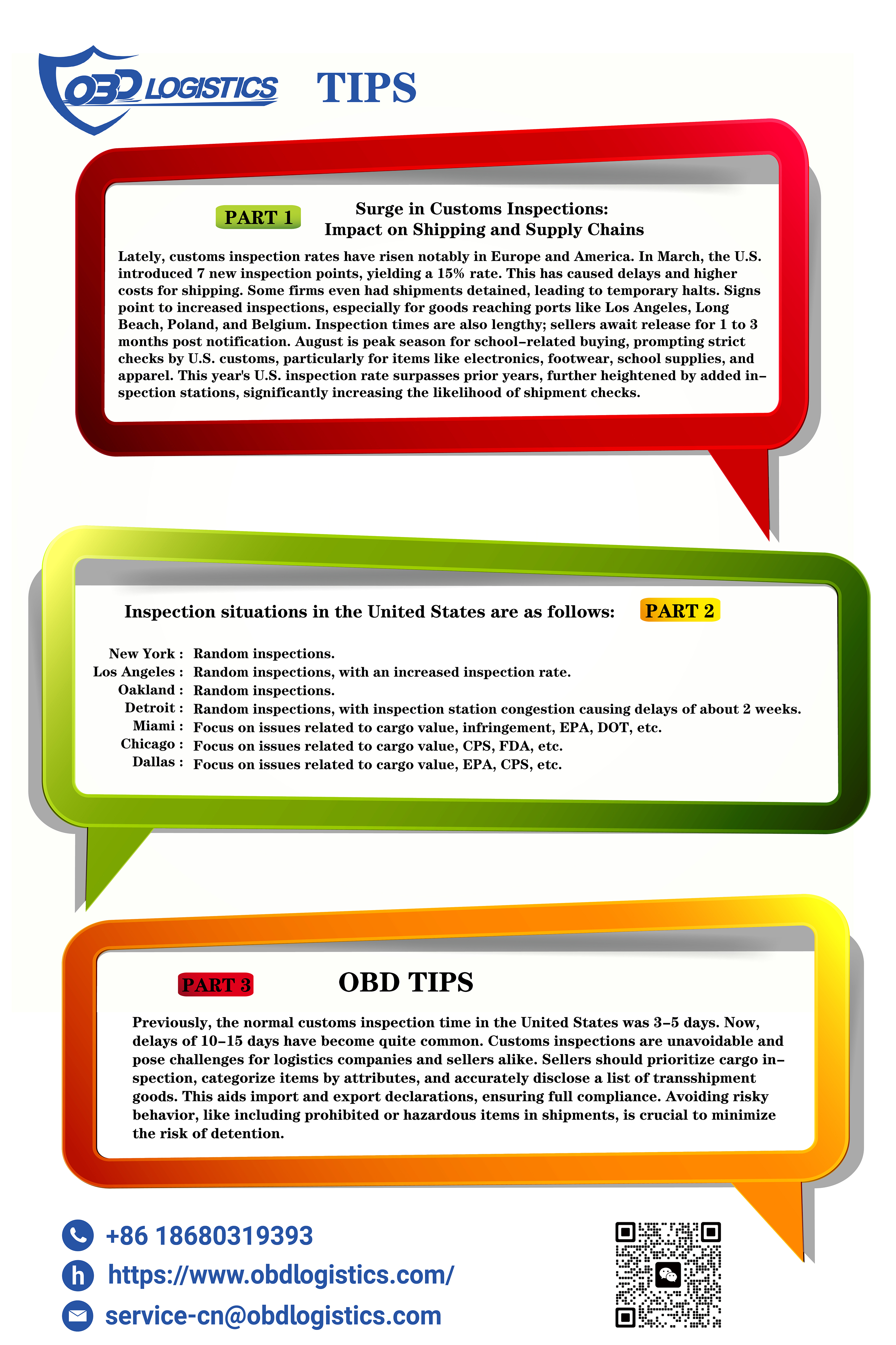Rising Customs Inspection Rates Impacting Global Trade: Delays and Challenges
The recent surge in customs inspection rates across Europe and the United States has caught many businesses off guard, leading to unexpected delays and increased costs. With the opening of seven new inspection sites by the U.S. Customs and Border Protection (CBP) in March, the inspection rate soared to 15%, significantly impacting shipping operations and supply chains. The consequences are far-reaching, with some shipments being held in "black holes" of inspection for up to 60 days.
The Growing Trend of Increased Inspection Rates
The rise in inspection rates has been especially noticeable for goods arriving at key ports such as Los Angeles, Long Beach, and entry points in Poland and Belgium. Signs of heightened scrutiny are evident as customs officials are placing a magnifying glass on various categories of products, including electronics, footwear, school supplies, and clothing, particularly as the back-to-school season peaks in August. This intensified inspection focus, combined with the opening of new inspection stations, has significantly increased the probability of shipments being subjected to rigorous examination.
Impact on Trade and Logistics
Industry insiders have reported a substantial shift in customs procedures and increased inspection frequency. For instance, major ports like New York, Los Angeles, Oakland, and Detroit are experiencing random inspections, often leading to substantial delays. In Detroit, the inspection process has become so overwhelmed that examination appointments are delayed by approximately two weeks. In Miami, inspections are targeting goods based on their value, infringements, and compliance with EPA and DOT regulations. Chicago and Dallas inspections have also taken a targeted approach, focusing on specific categories and regulatory compliance issues.
Delays and Challenges for Businesses
Previously, the standard inspection timeframe was 3-5 days. However, the current scenario has seen delays extending to 10-15 days, or even longer. High-risk shipments, categorized based on specific criteria, are subjected to multiple rounds of inspection, resulting in further delays. The combination of heightened inspection rates, increased demand during peak shipping seasons, and potential staffing shortages at inspection stations has prolonged the overall shipping process. For instance, shipments that require both X-ray and manual inspection may face delays exceeding a month.
Navigating the Landscape
Navigating the intricate landscape of increased inspection rates presents challenges for both logistics companies and sellers. It's crucial for sellers to prioritize compliance and categorization of goods. Accurate and transparent documentation, including detailed lists of shipped items, aids in seamless customs clearance. Emphasizing transparency can mitigate risks of shipment holds due to non-compliance or hazardous contents.
In conclusion, the surge in customs inspection rates is reshaping the logistics landscape, demanding adaptability and vigilance from businesses involved in international trade. As customs procedures evolve, staying informed and adopting a proactive approach to compliance are essential for successful navigation through these challenging times.
Post time: Aug-22-2023

